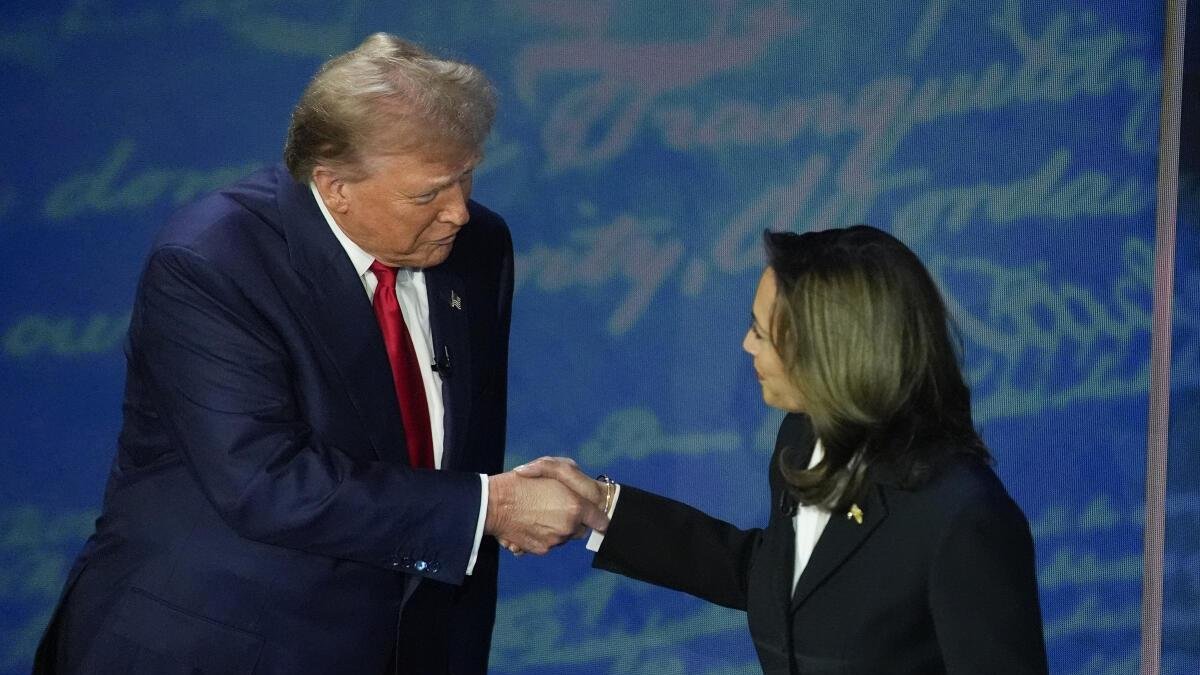(This article is part of the View From India newsletter curated by The Hindu’s foreign affairs experts. To get the newsletter in your inbox every Monday, subscribe here.)
On November 5, Americans will elect their 47th President, following an intense campaign that saw top contenders Kamala Harris and Donald Trump spend record amounts to woo voters who appear sharply divided on key political and economic issues. Days ahead of the pivotal presidential election in the U.S., reputable pollsters in the country have called the race a “dead heat”.
Sriram Lakshman, our correspondent in Washington D.C., has been tracking the campaign closely over the last few weeks, offering crucial perspectives from various parts of the country. Our former DC Correspondent Varghese George is also bringing our readers additional insights from the ground. You can find our full coverage of the U.S. elections here.
As the race for the White House goes down to the wire, Democratic candidate and U.S. Vice-President Kamala Harris and her Republican opponent, former U.S. President Donald Trump, focused their weekend campaigns on three ‘Blue Wall’ States — Michigan, Wisconsin and Pennsylvania, Sriram Lakshman writes in this latest update.
Understandably, the biggest humanitarian crisis of our times — Israel’s brutal war on Gaza which has claimed close to 45,000 lives so far — has emerged a prominent theme. Democrats are caught in a tricky situation between the Jewish and Muslim communities over the Biden administration’s support for Israel in its conflict with Gaza, and the larger West Asian region. This is playing out clearly in Michigan, where, in the primary race, Mr. Biden had to reckon with a large majority of “uncommitted” votes in Arab-majority areas. On the other hand, the Trump campaign has been running ads suggesting that Jewish Americans are only safe under a Trump regime — both because of his pro-Israel stance and instances of anti-semitism in the wake of Israel’s retaliation on Gaza.
Presenting her closing argument, Ms. Harris adopted a new, tougher, tone on illegal migration, spoke about her economic plans and drew a line between herself and the Biden administration. She also presented herself as the unifying candidate, as opposed to Mr. Trump, whom she linked to conflict and drama.
This was days after Mr. Trump spoke of the U.S. being overrun by dangerous criminal illegal migrants, made multiple derisive references to his Democratic opponent, Vice President Kamala Harris and called the media present at the rally “fake news”. He characterised the election as a battle against the “radical left machine”, and said he would tackle inflation and end the wars in West Asia and Europe.
WATCH: Battle for the White House | Sriram Lakshman shares key takeaways from the closing arguments of Ms. Harris and Mr. Trump.
Tracking racial minorities
Generalising the minority vote anywhere in the world, including the U.S., often amounts to reducing their interests to a few preoccupations and homogenising them as communities. Poll outcomes invariably tell us a more complex story.
Economic insecurity and cultural anxieties triggering white nativism is the familiar explanation for the sustained popularity of Donald Trump in the United States, but that may not be the whole picture, Varghese George finds out in Michigan. Segments of Hindu and Muslim immigrants in the key swing State of Michigan also support the Republican for the same reasons, as they begin to view the Democratic Party’s cultural agenda disorienting and its soft border policy threatening their interests.
How are Indian Americans positioning themselves in this crucial election? A new survey of Indian American political attitudes finds that while members of this group strongly support the Democratic Party, as they have historically, their attachment to the party has declined, Sriram Lakshman writes. Meanwhile, U.S. presidential candidates, Republican Donald Trump and Democrat Kamala Harris, extended Deepavali wishes to all, with the former also promising to “protect Hindu Americans against the anti-religion agenda of the radical left.” Varghese George writes on Mr. Trump going into “damage control” mode when he recently tried to win over the Latino community. “Nobody loves our Latino community and our Puerto Rican community more than I do,” Mr. Trump said at a rally in Pennsylvania, a critical swing State that he won narrowly in 2016 and lost narrowly in 2020.
What’s in store:
As we count down to the November 5 election, after what is arguably the most polarised campaign in recent history, it is time to start looking at what the future may hold, our Diplomatic Affairs Editor Suhasini Haidar writes. In the run-up to the polls, there were surprising turns, including the Joseph Biden-Kamala Harris switch as the Democrat candidate, and the assassination attempts on former President and Republican nominee Donald Trump. A number of books on the upcoming elections makes it clear there are not two, but three likely outcomes: a Trump win, a Harris win, and a contested outcome that goes to the courts, and possibly the streets.
Top 5 stories we are reading this week:
1. What are the key takeaways from COP-16? Jacob Koshy writes.
2. Strengthening the India link in the Indo-Pacific Economic Framework for Prosperity – by Akshobh Giridharadas and Mark Linscott
3. The BRICS summit boost to India-Iran ties by Rajeev Agarwal
4. Georgian Dream: Clinging to power by Adithya Narayan
5. Naim Qassem: From spokesman to leader by Suchitra Karthikeyan
Published – November 04, 2024 03:08 pm IST
